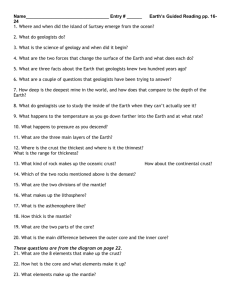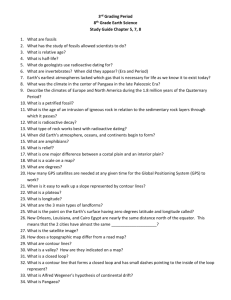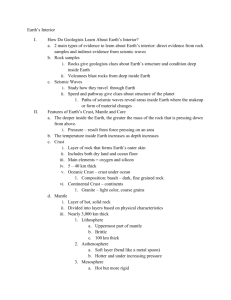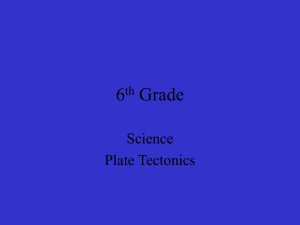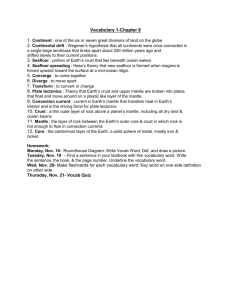Name
advertisement
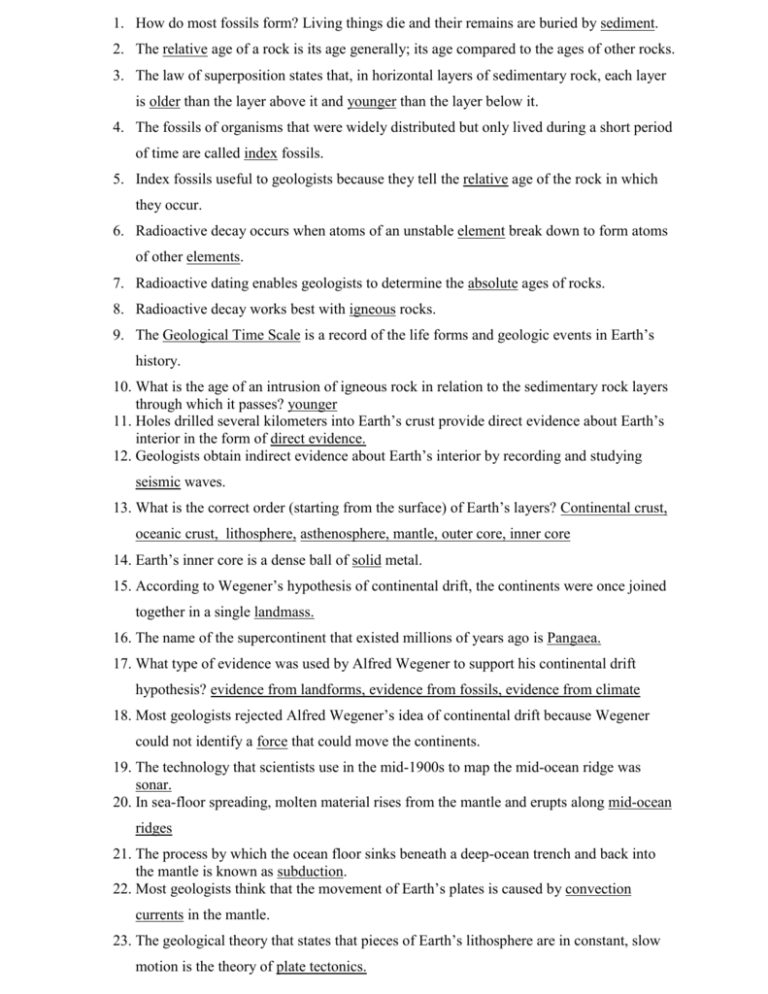
1. How do most fossils form? Living things die and their remains are buried by sediment. 2. The relative age of a rock is its age generally; its age compared to the ages of other rocks. 3. The law of superposition states that, in horizontal layers of sedimentary rock, each layer is older than the layer above it and younger than the layer below it. 4. The fossils of organisms that were widely distributed but only lived during a short period of time are called index fossils. 5. Index fossils useful to geologists because they tell the relative age of the rock in which they occur. 6. Radioactive decay occurs when atoms of an unstable element break down to form atoms of other elements. 7. Radioactive dating enables geologists to determine the absolute ages of rocks. 8. Radioactive decay works best with igneous rocks. 9. The Geological Time Scale is a record of the life forms and geologic events in Earth’s history. 10. What is the age of an intrusion of igneous rock in relation to the sedimentary rock layers through which it passes? younger 11. Holes drilled several kilometers into Earth’s crust provide direct evidence about Earth’s interior in the form of direct evidence. 12. Geologists obtain indirect evidence about Earth’s interior by recording and studying seismic waves. 13. What is the correct order (starting from the surface) of Earth’s layers? Continental crust, oceanic crust, lithosphere, asthenosphere, mantle, outer core, inner core 14. Earth’s inner core is a dense ball of solid metal. 15. According to Wegener’s hypothesis of continental drift, the continents were once joined together in a single landmass. 16. The name of the supercontinent that existed millions of years ago is Pangaea. 17. What type of evidence was used by Alfred Wegener to support his continental drift hypothesis? evidence from landforms, evidence from fossils, evidence from climate 18. Most geologists rejected Alfred Wegener’s idea of continental drift because Wegener could not identify a force that could move the continents. 19. The technology that scientists use in the mid-1900s to map the mid-ocean ridge was sonar. 20. In sea-floor spreading, molten material rises from the mantle and erupts along mid-ocean ridges 21. The process by which the ocean floor sinks beneath a deep-ocean trench and back into the mantle is known as subduction. 22. Most geologists think that the movement of Earth’s plates is caused by convection currents in the mantle. 23. The geological theory that states that pieces of Earth’s lithosphere are in constant, slow motion is the theory of plate tectonics. 24. A place where two plates slip past each other, moving in opposite directions, is known as a transform boundary. 25. A rift valley forms at a divergent plate boundary. 26. Using data from seismic waves, geologists have learned that Earth’s interior is made up of several layers. 27. Earth’s mantle is a layer of hot rock. 28. Earth’s magnetic field results from movements in the outer core. 29. Scientists think that convection currents flow in Earth’s mantle. 30. A collision between two pieces of continental crust at a converging boundary produces a mountain range. 31. Mid-ocean ridges are found in all of Earth’s oceans. 32. The place where two plates come together is known as a convergent boundary. 33. A(n) unconformity is a gap in the geologic record where some rock layers have been lost because of erosion. 34. A fault is formed at a transform boundary. 35. A scientist can find the absolute age of a sedimentary layer by finding the age of intrusions and extrusions 36. Arthur Holmes suggested the power of convection was the force that moved the plates, but warned that his ideas have no scientific value until they acquire support from independent evidence. 37. Harry Hess proposed that the movement of the continents was a result of sea-floor spreading. 38. Magnetic strips are the evidence for sea-floor spreading. 39. The asthenosphere is part of which layer of Earth? mantle 40. The inner core is solid rather than liquid because of the increase in pressure 41. Which layer of Earth is made up partly of crust and partly of mantle material? lithosphere 42. Name three ways that oceanic crust and continental crust are different: density, type of rock, thickness
